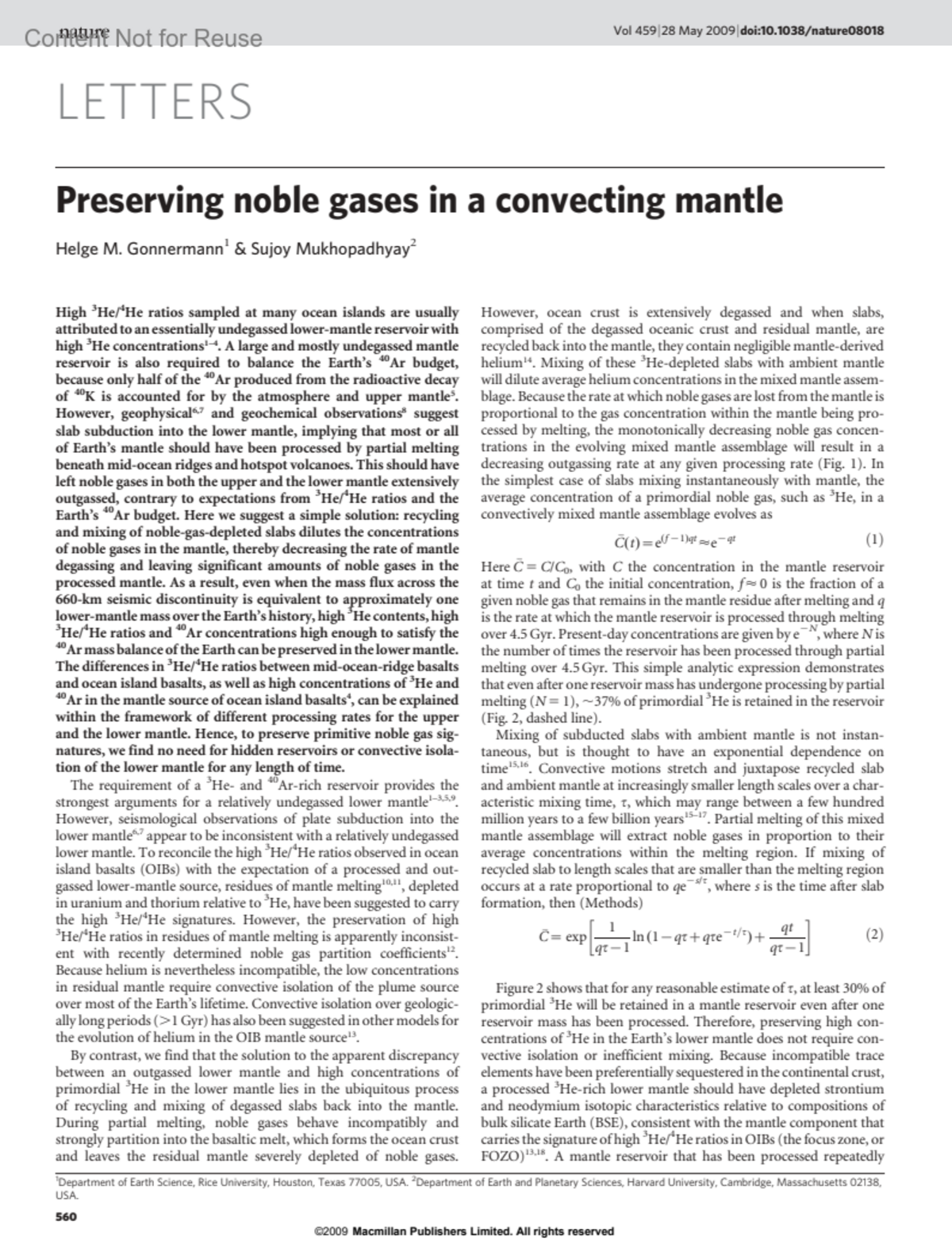Preserving noble gases in a convecting mantle
- Gonnermann, Helge M.
- Mukhopadhyay, Sujoy
1Department of Earth Science, Rice University, Houston, Texas 77005, USA
2Department of Earth and Planetary Sciences, Harvard University, Cambridge, Massachusetts 02138, USA
Author Information Reprints and permissions information is available at www.nature.com/reprints. Correspondence and requests for materials should be addressed to H.M.G. ([email protected]) or S.M. ([email protected]).
Received 08 December 2008; accepted 24 March 2009
High3He/4He ratios sampled at many ocean islands are usually attributed to an essentially undegassed lower-mantle reservoir with high 3He concentrations. A large and mostly undegassed mantle reservoir is also required to balance the Earth’s 40Ar budget, because only half of the 40Ar produced from the radioactive decay of 40K is accounted for by the atmosphere and upper mantle. However, geophysicaland geochemical observationssuggest slab subduction into the lower mantle, implying that most or all of Earth’s mantle should have been processed by partial melting beneath mid-ocean ridges and hotspot volcanoes. This should have left noble gases in both the upper and the lower mantle extensively outgassed, contrary to expectations from 3He/4He ratios and the Earth’s 40Ar budget. Here we suggest a simple solution: recycling and mixing of noble-gas-depleted slabs dilutes the concentrations of noble gases in the mantle, thereby decreasing the rate of mantle degassing and leaving significant amounts of noble gases in the processed mantle. As a result, even when the mass flux across the 660-km seismic discontinuity is equivalent to approximately one lower-mantle mass over the Earth’s history, high 3He contents, high 3He/4He ratios and 40Ar concentrations high enough to satisfy the 40Ar mass balance of the Earth can be preserved in the lower mantle. The differences in 3He/4He ratios between mid-ocean-ridge basalts and ocean island basalts, as well as high concentrations of 3He and 40Ar in the mantle source of ocean island basalts, can be explained within the framework of different processing rates for the upper and the lower mantle. Hence, to preserve primitive noble gas signatures, we find no need for hidden reservoirs or convective isolation of the lower mantle for any length of time.
Author Contributions H.M.G. and S.M. together developed the ideas presented here. H.M.G. developed the geochemical reservoir model and performed the numerical modelling. H.M.G. and S.M. analysed the results and co-wrote the paper.

